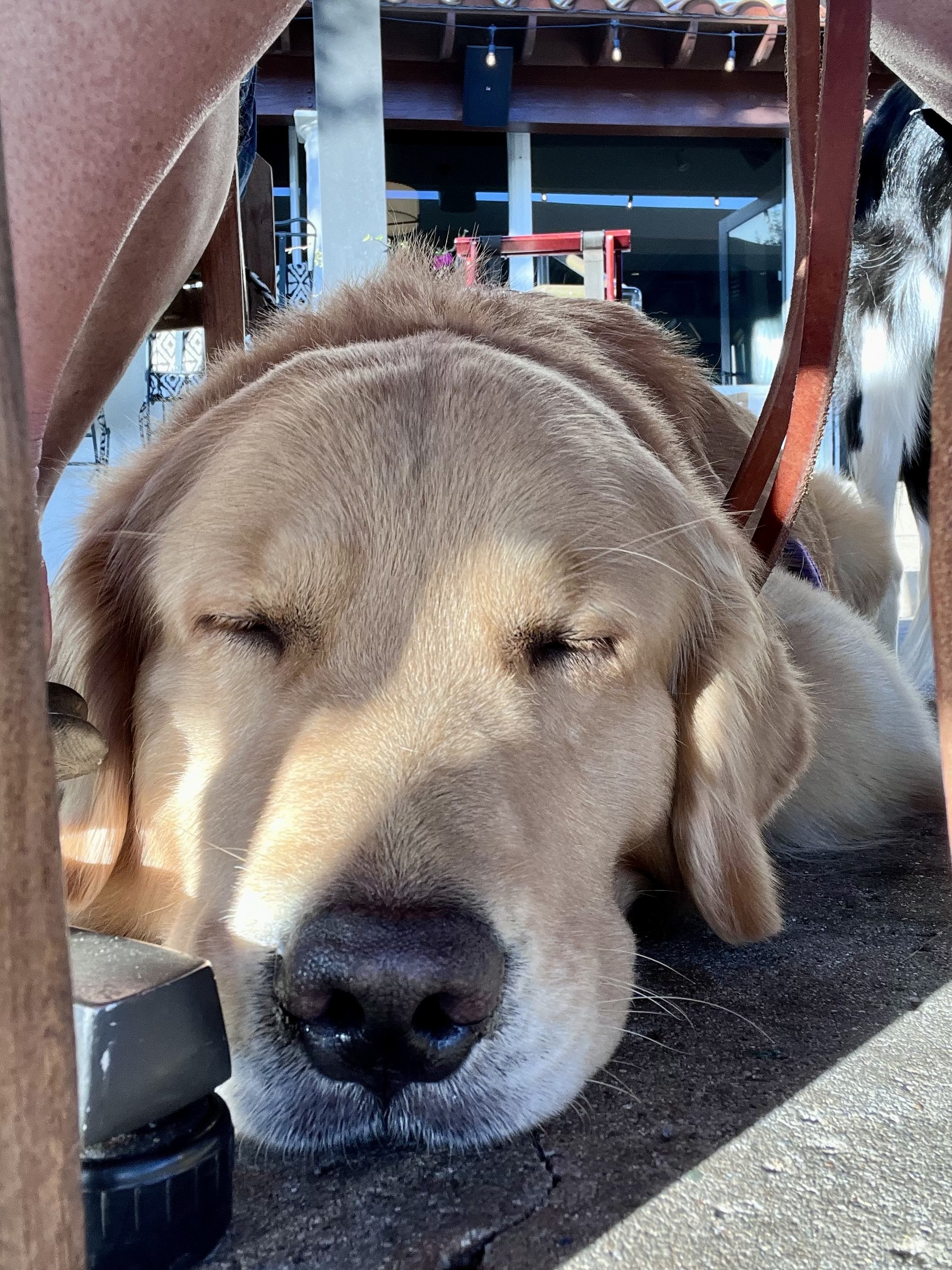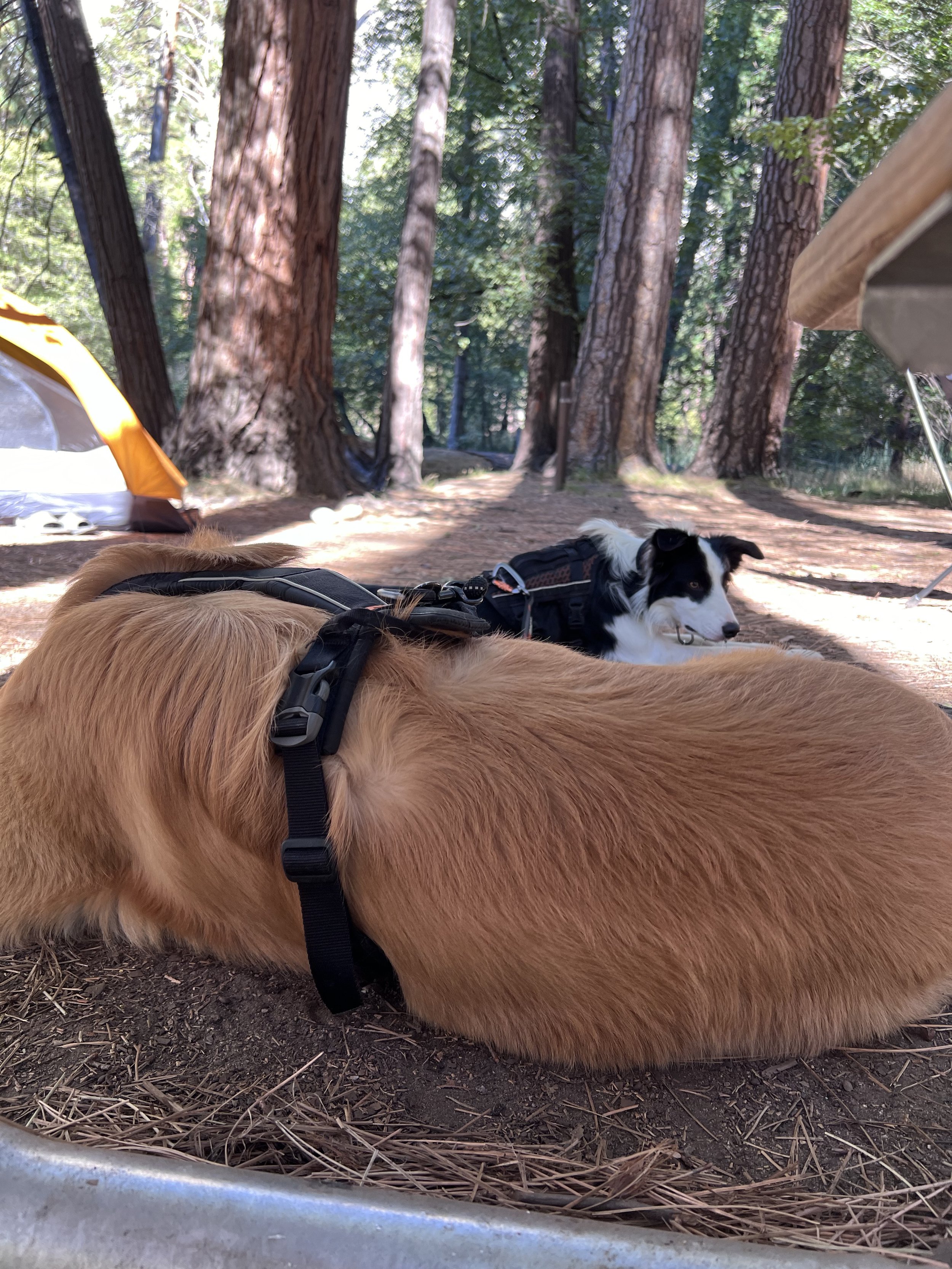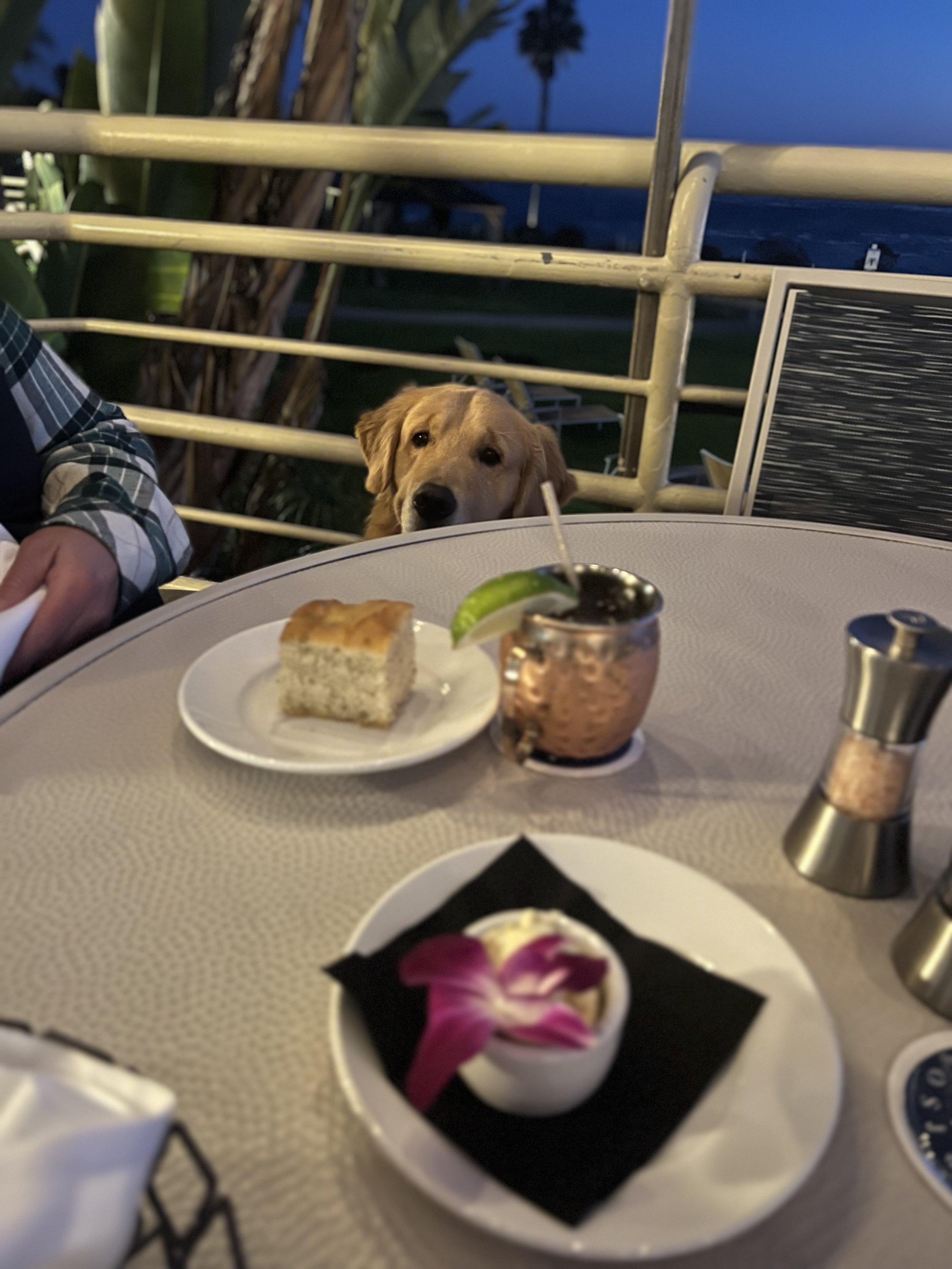
Training Skills to make travel easier
Tips for traveling with dogs
The biggest things I focus on when preparing my dog’s for travel are more to do with how they FEEL being in new environments so it is easier for them to take direction and be safe away from home, but here are a few of the specific skills I work on to make travel safer.
1) An automatic wait at all doors, including their crate doors. Having dogs that always wait for a verbal release rather than leaping out the car door or feeling like you have to worry each time you open the hotel room door brings great peace of mind.
How do I teach an automatic wait?
From day 1, I reinforce my dogs as I open doors before they have a chance to run out.
Then I reinforce for coming through the threshold on their verbal release cue, if they break through without waiting, I do not punish them, I just don’t reward and we go back in and try again.
I teach them from the start to wait at a threshold until they hear their name. This way I can take them out one at a time if needed with ease.
I am CONSISTENT, I give a verbal release every time they get out of the car or out of a door.
2) Stay/wait is the cue I use the MOST during travel. While a come command is what I consider the most important skill to teach, during travel my dogs are almost always on leash! Even though they have great recalls, I error on the side of safety and prefer to use leashes to make sure they are safe. So I don’t use it much.
Stay while the elevator door opens, I don’t know what is coming out of it, or if anything is right on the other side of the door opening, so I have my dogs sit stay or stand stay behind as the doors open.
Stay while I pick up your 💩. Much of the time I had both dogs on leash as I picked up after them, it is so much easier if they both stand still until I have done so.
Stay while I open their crates to give them water.
Stay while I open their crates and get their leashes on.
They both have to step out of the crate and wait as I put their harnesses on before they exit the car because I can’t reach in to put it on in the crates.
Stay while at the counter of a hotel or restaurant as we wait to be served.
There is a lot of waiting while on the road, so patient dogs with solid stays make all of those moments easier.
3) Accepting a tether. Many dogs are not able to be safely tethered without trying to chew through the leash. To be clear my dogs are NEVER tethered unsupervised, it is in my opinion too unsafe as your dog is limited in defending themselves if loose dogs run up, if wild animals approach them, if shady people approach them. So we use tethers at times when we are hanging out in a spot with them and need our dogs to hangout as well and we want our hands free.
When hanging out in camp, having dogs ok with a tether allows me to tie them to my chair and have my hands free to eat snacks, hold books, prepare food, etc.
When eating out, having dogs that are ok with a tether allows me to eat with both hands with my dog’s tethered to my chair.
I use a harness with a tether so they are not able to lunge against their necks.
I often tether my dogs to the back of the car as I brush off the sand/dirt, or dry them off before getting back in the car.
4) Load up. Having dogs that happily and willingly hop into the car on cue makes all those stops so much easier! Even for dogs that maybe cannot jump all the way in, I teach them to put their front paws up and let me boost them the rest of the way. I work from the start to make the car a favorite place! We play many games to make getting in and out of the car a fun engaging with me experience and not a bummer end of the fun event.
My dogs are reinforced 100% of the time they get into the car.
I don’t rush it, when they get in I don’t just shut the door and drive away, I give them some pets and love for getting in their crate, I give them a drink of water, I give them a few treats.
I practice at home or at trailheads that getting in the car doesn’t mean the fun is over, I give them treats and affection for getting in, and then let them back out.
I want my dogs to see their car as a safe space and a haven, not a bummer.
This can take a lot of work for a dog with a negative association. It took me months with Julia using the portable stairs to help her feel comfortable getting in the car.
5) Leash walking skills. I never expect my dogs to be great at loose leash walking when we travel. It is incredibly difficult for them or us to keep our focus to create a constant loose leash. You see here my leash walking set up when we travel, I use a harness and a double clip leash so I can clip on to the back of the harness and one to either the front of the harness like you see with Leo or to a collar like Julia.
When traffic and space allows i hold the lead so any tension hits the back clip
If I need to control them as something exciting goes by or we navigate a busier space I hold the leash so the collar or front clip has the tension
I’ve trained the dogs that back clip tension is fine, that collar or front clip tension is a cue to orient to me
For Julia this gives us two points of contact so if she slips her collar she still has the harness on, or the other way around
Both dogs had 2 harnesses along, these ones pictured are their “city walking” harnesses, it’s not about them being more effective or not, it was simply one was the getting wet, muddy, sandy one and the other was dry and more socially acceptable 😂
I use both retractable leashes and regular fixed length leashes. I never use a retractable around traffic, using those where I might normally let them off leash - like at the beach, in a field on a dirt road. I want a fixed length leash anytime I am going to need to guide my dogs.
6) Leave it. SO. MANY. GROSS. THINGS. were left alone.
Dead birds and parts of birds
Dead seal
endless species of 💩
Half eaten pizza
Chicken bones
Unidentifiable things that might be food, might be barf, might be plant material???
There are many more skills we used, but those are the skills we used the most! Other helpful skills:
Letting me wipe your feet
Place (a wait with a physical spot)
Tuck (laying under a table)
Touch (using to redirect Julia during distractions)





